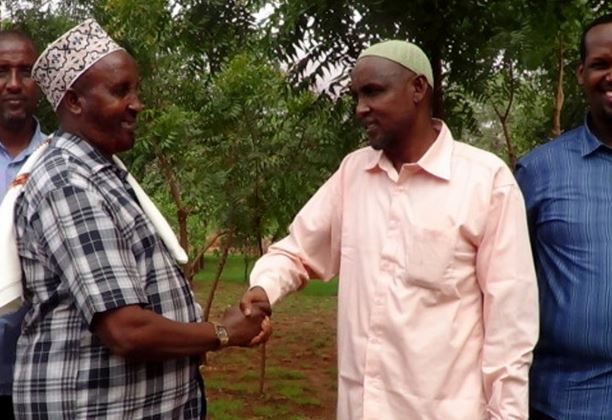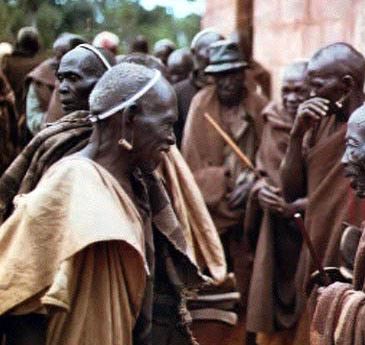| Social relations |
|---|
| The family |
| The clan system |
| Cultural artifacts |
| Education |
| The school |
| Assessment questions |
- A clan is a group of people with a common ancestor.
- In the past, clan members lived in the same area.
- Today, this has changed as more and more clan members migrate to towns.
- This has also made the clan system less effective.
- The role played by the clan members like defending the clan against attacks from other communities is now played by the government through the police force.
- In some areas the clan system is still strong, and clan leaders play an imoprtant role in decision making.

- A clan usually began with a powerful member of the society who married one or several wives.
- He then had children, some of whom were sons.
- These sons then got married to women from other clans and in turn, they got their own children.
- The women that came into the clan through marriage automatically became members of the clan.
- The grandsons born to them grew up also got married and in turn bore children. These increased the size of the family and eventually formed a clan.
- In many African communities, members of the same clan were never allowed to marry, as they were considered to be related by blood.
- This means that clans grow through marriage and natural population increase.
- When all clans of a given community are put together they form a traditional nation.
- In the past, this nation had its own laws, taboos, system of governments and organised army. It also had its own economic structure.
- When clan members disagreed they broke away and built new clans elsewhere. Here are some reasons why some clan members disagreed.
Below are the major functions of the clan in traditional communities.
Warriors used to have to be prepared to fight to protect their clan.

Every effort was made to ensure that the family was held together as a united social unit. Therefore, members were responsible for the well being of the clan as a whole, as well as for individual members.
There was need for members to help one another in times of need. For example, if there was death in the family.
Every member needed to protect the good name of the clan since any shame caused to it would ruin its reputation among other clans.
Young children had little or no direct responsibility.
In African traditional societies, a group of people born about the same time, grew up together and got initiated together formed an age-group. Different age groups formed age-sets.
In some communities such as the Mijikenda, an age-set consists of boys born up to within four years of each other. Among the Abaluyia on the other hand, an age-set may spread over seven years.
Many age-sets had names that were used in a set order. Among the Kipsigis, for example, there were names for seven different age-sets. These names are: Sawe, Chumo, Maina, Nyongi, Kip’nyigew, Kaplelach and Korongoro.
By simply knowing the name of a given person therefore, it was possible to approximately tell when he or she was born.
Among the Ameru, age-sets were important because they decided on who was qualified for a place on the Council of Elders known as Njuri Ncheke. They also made important decisions like when various age-sets were to be initiated and whether or not the community should go to war.
Here is an image of the Ameru clan
